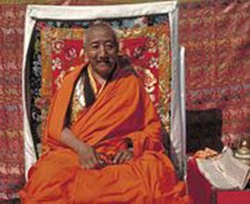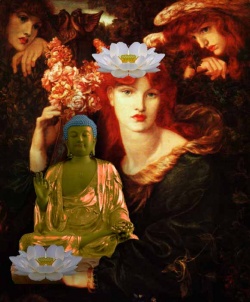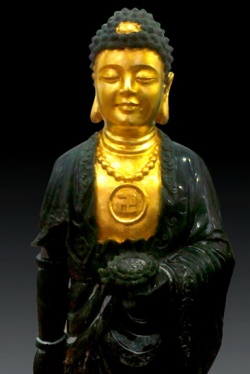Difference between revisions of "Martial Arts: Lie detection"
(Created page with "{{DisplayImages|2392|1403|870|4397|2296|3092}} :''"Oh what a tangled web we weave, when first we practice to deceive!" ::- Sir Walter Scott How may we detect when a person i...") |
|||
| Line 1: | Line 1: | ||
{{DisplayImages|2392|1403|870|4397|2296|3092}} | {{DisplayImages|2392|1403|870|4397|2296|3092}} | ||
:''"Oh what a tangled web we weave, when first we practice to deceive!" | :''"Oh what a tangled web we weave, when first we practice to deceive!" | ||
| − | ::- Sir Walter Scott | + | ::- {{Wiki|Sir Walter Scott}} |
| − | How may we detect when a person is lying to us? It's not easy, that's why we get lied to so much. There are some indicators that may alert us to when a person is lying, and, while they are not totally reliable, they may cause us to stop and think about what the person is saying instead of just just believing them unconditionally. | + | How may we detect when a [[person]] is {{Wiki|lying}} to us? It's not easy, that's why we get lied to so much. There are some indicators that may alert us to when a [[person]] is {{Wiki|lying}}, and, while they are not totally reliable, they may [[cause]] us to stop and think about what the [[person]] is saying instead of just just believing them unconditionally. |
| − | ===Micro expressions=== | + | ===Micro {{Wiki|expressions}}=== |
| − | In the Fox television series Lie to Me, Cal Lightman, portrayed by Tim Roth, uses his skill at detecting micro expressions that indicate lying to help his clients. The show is based upon Paul Ekman who uses the same techniques to assist law enforcement, the military, and intelligence agencies in detecting lies. | + | In the {{Wiki|Fox}} television series Lie to Me, Cal Lightman, portrayed by Tim Roth, uses his skill at detecting micro {{Wiki|expressions}} that indicate {{Wiki|lying}} to help his clients. The show is based upon Paul Ekman who uses the same techniques to assist law enforcement, the {{Wiki|military}}, and [[intelligence]] agencies in detecting lies. |
| − | Micro expressions are small expressions that unconsciously flash on a person face for less than one-fifth of a second that reflect what a person is really thinking regardless of what the person is saying. If the person is aware of the existence of micro expressions, the person may be able to suppress them or present false ones. For example, when a person acts happy, but is really upset about something, the true emotion will be revealed in a subconscious flash of anger on his or her face. | + | Micro {{Wiki|expressions}} are small {{Wiki|expressions}} that {{Wiki|unconsciously}} flash on a [[person]] face for less than one-fifth of a second that reflect what a [[person]] is really [[thinking]] regardless of what the [[person]] is saying. If the [[person]] is {{Wiki|aware}} of the [[existence]] of micro {{Wiki|expressions}}, the [[person]] may be able to suppress them or {{Wiki|present}} false ones. For example, when a [[person]] acts [[happy]], but is really upset about something, the true [[emotion]] will be revealed in a {{Wiki|subconscious}} flash of [[anger]] on his or her face. |
| − | Detecting lies is more of an art than a science. Micro expressions must be interpreted while considering the context and the situation in which they are made, and the person making them. Since there is no single expression that indicates lying, all physical expressions, the context they are used in, and the circumstances in which they are used are must be considered. Not all this can be done scientifically; it more of a learned art that takes much trial and error to perfect. Sometimes the interpretation is correct, sometimes it is incorrect, so lie detection is only one of many tools that may be used when trying to determine if a person is lying. | + | Detecting lies is more of an [[art]] than a [[science]]. Micro {{Wiki|expressions}} must be interpreted while considering the context and the situation in which they are made, and the [[person]] making them. Since there is no single expression that indicates {{Wiki|lying}}, all [[physical]] {{Wiki|expressions}}, the context they are used in, and the circumstances in which they are used are must be considered. Not all this can be done {{Wiki|scientifically}}; it more of a learned [[art]] that takes much trial and error to perfect. Sometimes the interpretation is correct, sometimes it is incorrect, so lie detection is only one of many tools that may be used when trying to determine if a [[person]] is {{Wiki|lying}}. |
| − | Sometimes, micro expressions may be misinterpreted. Ekman calls this error "Othello's Error." In the Shakespeare’s classic Othello, Othello interprets the look of fear on his wife's face as proof of her infidelity. However, in fact, she was merely afraid that Othello did not trust her. | + | Sometimes, micro {{Wiki|expressions}} may be misinterpreted. Ekman calls this error "Othello's Error." In the Shakespeare’s classic Othello, Othello interprets the look of {{Wiki|fear}} on his wife's face as [[proof]] of her infidelity. However, in fact, she was merely afraid that Othello did not [[trust]] her. |
| − | ===Examples of micro expressions or tells=== | + | ===Examples of micro {{Wiki|expressions}} or tells=== |
| − | Poker players constantly watch opponents trying to detect some micro expression, or “tell,” that will indicate a players’ true feeling about his or her hand. The best players learn to detect tells in others, and hide their own tells, or present false tells. | + | Poker players constantly watch opponents trying to detect some micro expression, or “tell,” that will indicate a players’ true [[feeling]] about his or her hand. The best players learn to detect tells in others, and hide their own tells, or {{Wiki|present}} false tells. |
| − | * Real smiles involve the entire face the eyebrows are slightly lowered, while fake smiles only affect the lower face. | + | * Real [[smiles]] involve the entire face the eyebrows are slightly lowered, while fake [[smiles]] only affect the lower face. |
| − | * In real sadness, the inner ends of the eyebrows rise slightly so the eyebrows slope downward, the cheeks are slightly raised, the lower lip pushes up slightly, and the corners of the mouth slope slightly downward. | + | * In real [[sadness]], the inner ends of the eyebrows rise slightly so the eyebrows slope downward, the cheeks are slightly raised, the lower lip pushes up slightly, and the corners of the {{Wiki|mouth}} slope slightly downward. |
* When surprised, both eyebrows are raised and the jaw drops open, as in Edvard Munch’s 1893 painting The Scream. | * When surprised, both eyebrows are raised and the jaw drops open, as in Edvard Munch’s 1893 painting The Scream. | ||
| − | * When angry, the brows are lowered, the eyes glare, the upper lip narrows, and the tightening of the lower lip. These lip changes are difficult to express when trying to fake anger. | + | * When [[angry]], the brows are lowered, the [[eyes]] glare, the upper lip narrows, and the tightening of the lower lip. These lip changes are difficult to express when trying to fake [[anger]]. |
| − | * When in fear, the eyebrows are raised and pulled together, the eyes are wide open with the upper eyelids raised and the lower ones tensed, and the lips are stretched outward. The most difficult part to fake is the simultaneous raising and pulling together of the eyebrows. | + | * When in {{Wiki|fear}}, the eyebrows are raised and pulled together, the [[eyes]] are wide open with the upper eyelids raised and the lower ones tensed, and the lips are stretched outward. The most difficult part to fake is the simultaneous raising and pulling together of the eyebrows. |
| − | * Disgust is indicated by a raised upper lip, a protruding lower lip, a wrinkled nose, raised cheeks, and lowered brows that cause wrinkling between the eyes. | + | * Disgust is indicated by a raised upper lip, a protruding lower lip, a wrinkled {{Wiki|nose}}, raised cheeks, and lowered brows that [[cause]] wrinkling between the [[eyes]]. |
| − | * Contempt is expressed by raising and tightening of one lip corner. | + | * [[Contempt]] is expressed by raising and tightening of one lip corner. |
| − | ===Other indicators of lying=== | + | ===Other indicators of {{Wiki|lying}}=== |
| − | Along with micro expressions, body language, gestures, choice of words, and manner of speaking also indicate what a person is really thinking. | + | Along with micro {{Wiki|expressions}}, [[body]] [[language]], gestures, choice of words, and [[manner]] of {{Wiki|speaking}} also indicate what a [[person]] is really [[thinking]]. |
| − | * A person may say “yes” while his or her head slightly shakes “no.” | + | * A [[person]] may say “yes” while his or her head slightly shakes “no.” |
| − | * A person may say they are sure about something but a slight lifting of a shoulder may indicate they are not sure. | + | * A [[person]] may say they are sure about something but a slight lifting of a shoulder may indicate they are not sure. |
| − | * Sometimes people unconsciously flip you the “bird” with their middle finger, such as Simon Cowell does on American Idol when he rubs his nose with his middle finger. | + | * Sometimes [[people]] {{Wiki|unconsciously}} flip you the “bird” with their middle finger, such as Simon Cowell does on American Idol when he rubs his {{Wiki|nose}} with his middle finger. |
| − | * While describing what another person said, a suspect may slip and say, “I said” instead of “he said.” | + | * While describing what another [[person]] said, a suspect may slip and say, “I said” instead of “he said.” |
| − | * A person may try to defect a question with another question or an accusation, Such as “How could you ask such a question at a time like this?” | + | * A [[person]] may try to defect a question with another question or an accusation, Such as “How could you ask such a question at a [[time]] like this?” |
| − | * A person on the phone could be saying they are sad while they are actually smiling; there is a discernable difference in a person’s voice when they are smiling. | + | * A [[person]] on the phone could be saying they are [[sad]] while they are actually smiling; there is a discernable difference in a person’s {{Wiki|voice}} when they are smiling. |
| − | * Too many pauses may indicate lying, as does shifting to a softer voice. | + | * Too many pauses may indicate {{Wiki|lying}}, as does shifting to a softer {{Wiki|voice}}. |
| − | ===Unreliable indicators of lying=== | + | ===Unreliable indicators of {{Wiki|lying}}=== |
| − | When interpreting expressions, one must be careful. Sometimes you may be mislead. | + | When interpreting {{Wiki|expressions}}, one must be careful. Sometimes you may be mislead. |
| − | * Shifty eyes may indicate lying or they may indicate careful thinking. | + | * Shifty [[eyes]] may indicate {{Wiki|lying}} or they may indicate careful [[thinking]]. |
| − | * Strong eye contact may indicate lying or that the person his trying to assert dominance. | + | * Strong [[eye]] [[contact]] may indicate {{Wiki|lying}} or that the [[person]] his trying to assert dominance. |
| − | * Looking away when answering a question may indicate lying or it may be because the person has a problem maintaining eye contact. | + | * Looking away when answering a question may indicate {{Wiki|lying}} or it may be because the [[person]] has a problem maintaining [[eye]] [[contact]]. |
| − | * Nervous yawning may indicate deception or it may indicate boredom or a stuffy environment. | + | * Nervous yawning may indicate [[deception]] or it may indicate {{Wiki|boredom}} or a stuffy environment. |
| − | * A person who fidgets a lot often indicates nervousness, not deception. | + | * A [[person]] who fidgets a lot often indicates nervousness, not [[deception]]. |
===What to look for=== | ===What to look for=== | ||
| − | * Look for inconsistencies. To know if someone is lying, look for inconsistencies in what the person is saying. People may bit recall everything correctly, but they should recall it consistently. True memories tend to be consistent; liars tend to get their lies confused. | + | * Look for inconsistencies. To know if someone is {{Wiki|lying}}, look for inconsistencies in what the [[person]] is saying. [[People]] may bit recall everything correctly, but they should recall it consistently. True [[memories]] tend to be consistent; liars tend to get their lies confused. |
| − | * Ask the unexpected, About 4% of people are accomplished liars. To trip them up, ask them a question that they are not prepared to answer when they least expect it. | + | * Ask the unexpected, About 4% of [[people]] are accomplished liars. To trip them up, ask them a question that they are not prepared to answer when they least expect it. |
| − | * Gauge against a baseline. An important indicator of dishonesty is changes in behavior. Distrust someone who is generally anxious, but now looks calm. Or, someone who is generally calm but now looks anxious. If you know the person, gauge his or her behavior against a baseline. Is the behaving normally? | + | * Gauge against a baseline. An important indicator of [[dishonesty]] is changes in {{Wiki|behavior}}. [[Distrust]] someone who is generally anxious, but now looks [[calm]]. Or, someone who is generally [[calm]] but now looks anxious. If you know the [[person]], gauge his or her {{Wiki|behavior}} against a baseline. Is the behaving normally? |
| − | * Look for insincere emotions. Most people cannot fake smile; the timing will be off, for example, it will be held too long or occur at inappropriate times. Watch for inconsistencies, such as an angry face with a smile, In a insecure smile, the lips are smaller and less full than in a sincere smile. | + | * Look for insincere [[emotions]]. Most [[people]] cannot fake [[smile]]; the timing will be off, for example, it will be held too long or occur at inappropriate times. Watch for inconsistencies, such as an [[angry]] face with a [[smile]], In a insecure [[smile]], the lips are smaller and less full than in a sincere [[smile]]. |
| − | * Attention to gut reactions. Sometimes, you just know someone is lying. You cannot articulate exactly how you know it; it is just an art you have cultivated from experiences during your life. | + | * [[Attention]] to gut reactions. Sometimes, you just know someone is {{Wiki|lying}}. You cannot articulate exactly how you know it; it is just an [[art]] you have cultivated from [[experiences]] during your [[life]]. |
| − | * Look for contradictions. If a person’s voice or gestures do not fit the words he or she is saying, it may indicate a lie, Such as answering yes to a question, while subconsciously shaking the head no. These contradictions may be between the voice and the words, the gesture and the voice, the gesture and the words, or the face and the words. | + | * Look for contradictions. If a person’s {{Wiki|voice}} or gestures do not fit the words he or she is saying, it may indicate a lie, Such as answering yes to a question, while subconsciously shaking the head no. These contradictions may be between the {{Wiki|voice}} and the words, the gesture and the {{Wiki|voice}}, the gesture and the words, or the face and the words. |
| − | * Too much detail. Too much detail in answer to a simple question could indicate the person has put a lot of thought into constructing a complicated lie. | + | * Too much detail. Too much detail in answer to a simple question could indicate the [[person]] has put a lot of [[thought]] into constructing a complicated lie. |
| − | * Do not ignore the truth. It is more important to recognize when someone is telling the truth than when someone is lying because people may appear to be lying, but be telling truth. | + | * Do not ignore the [[truth]]. It is more important to [[recognize]] when someone is telling the [[truth]] than when someone is {{Wiki|lying}} because [[people]] may appear to be {{Wiki|lying}}, but be telling [[truth]]. |
| − | * Eyebrows. Eyebrows are raised when a person knows the answer to a question, lowered if he or she does not. Eyebrows are oblique when sad, which is difficult to hide. | + | * Eyebrows. Eyebrows are raised when a [[person]] [[knows]] the answer to a question, lowered if he or she does not. Eyebrows are oblique when [[sad]], which is difficult to hide. |
| − | * Pupils. Sudden dilation of the pupils indicates arousal, sexual, anger, fear, or excitement; further questioning may reveal which one. | + | * Pupils. Sudden dilation of the pupils indicates arousal, {{Wiki|sexual}}, [[anger]], {{Wiki|fear}}, or [[excitement]]; further questioning may reveal which one. |
| − | * Looking down. Eyes looking downward may indicate shame, disgust, disappointment, discouragement, regret, guilt, or sadness; further questioning may reveal which one. | + | * Looking down. [[Eyes]] looking downward may indicate [[shame]], {{Wiki|disgust}}, disappointment, discouragement, [[regret]], [[guilt]], or [[sadness]]; further questioning may reveal which one. |
| − | * Touching ears. Touching the ears my indicate lying or nervousness. | + | * [[Touching]] [[ears]]. [[Touching]] the [[ears]] my indicate {{Wiki|lying}} or nervousness. |
| − | * Flared nostrils. Flared nostrils may indicate fear, anger, or sadness. | + | * Flared nostrils. Flared nostrils may indicate {{Wiki|fear}}, [[anger]], or [[sadness]]. |
| − | * Biting lips. Biting the lips indicates stress, either from fear of being caught lying or from not being believed. | + | * Biting lips. Biting the lips indicates [[stress]], either from {{Wiki|fear}} of being caught {{Wiki|lying}} or from not being believed. |
| − | * Clenched jaw. A clenched jaw may be a nervous habit or an attempt to control anger or what is being said. | + | * Clenched jaw. A clenched jaw may be a nervous [[Wikipedia:Habit (psychology)|habit]] or an attempt to control [[anger]] or what is being said. |
| − | * Swallowing. Repeated swallowing is a sign of elevated emotions. | + | * Swallowing. Repeated {{Wiki|swallowing}} is a sign of elevated [[emotions]]. |
| − | * Cold hands. Cold hands indicate fear as the body prepares for flight, draws blood away from the arms, and pumps it into the legs. Hot hands indicate anger as the body pumps more blood into the arms to prepare for a fight. | + | * Cold hands. Cold hands indicate {{Wiki|fear}} as the [[body]] prepares for flight, draws {{Wiki|blood}} away from the arms, and pumps it into the {{Wiki|legs}}. [[Hot]] hands indicate [[anger]] as the [[body]] pumps more {{Wiki|blood}} into the arms to prepare for a fight. |
| − | * Heart rate. Sudden jumps in heart rate and blood pressure and increased sweating indicate elevated emotion. | + | * [[Heart]] rate. Sudden jumps in [[heart]] rate and {{Wiki|blood}} pressure and increased sweating indicate elevated [[emotion]]. |
| − | Verify before taking action. When trying to determine is a person is lying, you may use all these clues, but, before taking any action, use other verifiable facts to prove it for sure. | + | Verify before taking [[action]]. When trying to determine is a [[person]] is {{Wiki|lying}}, you may use all these clues, but, before taking any [[action]], use other verifiable facts to prove it for sure. |
==Sources== | ==Sources== | ||
Latest revision as of 19:59, 28 May 2014
- "Oh what a tangled web we weave, when first we practice to deceive!"
How may we detect when a person is lying to us? It's not easy, that's why we get lied to so much. There are some indicators that may alert us to when a person is lying, and, while they are not totally reliable, they may cause us to stop and think about what the person is saying instead of just just believing them unconditionally.
Micro expressions
In the Fox television series Lie to Me, Cal Lightman, portrayed by Tim Roth, uses his skill at detecting micro expressions that indicate lying to help his clients. The show is based upon Paul Ekman who uses the same techniques to assist law enforcement, the military, and intelligence agencies in detecting lies.
Micro expressions are small expressions that unconsciously flash on a person face for less than one-fifth of a second that reflect what a person is really thinking regardless of what the person is saying. If the person is aware of the existence of micro expressions, the person may be able to suppress them or present false ones. For example, when a person acts happy, but is really upset about something, the true emotion will be revealed in a subconscious flash of anger on his or her face.
Detecting lies is more of an art than a science. Micro expressions must be interpreted while considering the context and the situation in which they are made, and the person making them. Since there is no single expression that indicates lying, all physical expressions, the context they are used in, and the circumstances in which they are used are must be considered. Not all this can be done scientifically; it more of a learned art that takes much trial and error to perfect. Sometimes the interpretation is correct, sometimes it is incorrect, so lie detection is only one of many tools that may be used when trying to determine if a person is lying.
Sometimes, micro expressions may be misinterpreted. Ekman calls this error "Othello's Error." In the Shakespeare’s classic Othello, Othello interprets the look of fear on his wife's face as proof of her infidelity. However, in fact, she was merely afraid that Othello did not trust her.
Examples of micro expressions or tells
Poker players constantly watch opponents trying to detect some micro expression, or “tell,” that will indicate a players’ true feeling about his or her hand. The best players learn to detect tells in others, and hide their own tells, or present false tells.
- Real smiles involve the entire face the eyebrows are slightly lowered, while fake smiles only affect the lower face.
- In real sadness, the inner ends of the eyebrows rise slightly so the eyebrows slope downward, the cheeks are slightly raised, the lower lip pushes up slightly, and the corners of the mouth slope slightly downward.
- When surprised, both eyebrows are raised and the jaw drops open, as in Edvard Munch’s 1893 painting The Scream.
- When angry, the brows are lowered, the eyes glare, the upper lip narrows, and the tightening of the lower lip. These lip changes are difficult to express when trying to fake anger.
- When in fear, the eyebrows are raised and pulled together, the eyes are wide open with the upper eyelids raised and the lower ones tensed, and the lips are stretched outward. The most difficult part to fake is the simultaneous raising and pulling together of the eyebrows.
- Disgust is indicated by a raised upper lip, a protruding lower lip, a wrinkled nose, raised cheeks, and lowered brows that cause wrinkling between the eyes.
- Contempt is expressed by raising and tightening of one lip corner.
Other indicators of lying
Along with micro expressions, body language, gestures, choice of words, and manner of speaking also indicate what a person is really thinking.
- A person may say “yes” while his or her head slightly shakes “no.”
- A person may say they are sure about something but a slight lifting of a shoulder may indicate they are not sure.
- Sometimes people unconsciously flip you the “bird” with their middle finger, such as Simon Cowell does on American Idol when he rubs his nose with his middle finger.
- While describing what another person said, a suspect may slip and say, “I said” instead of “he said.”
- A person may try to defect a question with another question or an accusation, Such as “How could you ask such a question at a time like this?”
- A person on the phone could be saying they are sad while they are actually smiling; there is a discernable difference in a person’s voice when they are smiling.
- Too many pauses may indicate lying, as does shifting to a softer voice.
Unreliable indicators of lying
When interpreting expressions, one must be careful. Sometimes you may be mislead.
- Shifty eyes may indicate lying or they may indicate careful thinking.
- Strong eye contact may indicate lying or that the person his trying to assert dominance.
- Looking away when answering a question may indicate lying or it may be because the person has a problem maintaining eye contact.
- Nervous yawning may indicate deception or it may indicate boredom or a stuffy environment.
- A person who fidgets a lot often indicates nervousness, not deception.
What to look for
- Look for inconsistencies. To know if someone is lying, look for inconsistencies in what the person is saying. People may bit recall everything correctly, but they should recall it consistently. True memories tend to be consistent; liars tend to get their lies confused.
- Ask the unexpected, About 4% of people are accomplished liars. To trip them up, ask them a question that they are not prepared to answer when they least expect it.
- Gauge against a baseline. An important indicator of dishonesty is changes in behavior. Distrust someone who is generally anxious, but now looks calm. Or, someone who is generally calm but now looks anxious. If you know the person, gauge his or her behavior against a baseline. Is the behaving normally?
- Look for insincere emotions. Most people cannot fake smile; the timing will be off, for example, it will be held too long or occur at inappropriate times. Watch for inconsistencies, such as an angry face with a smile, In a insecure smile, the lips are smaller and less full than in a sincere smile.
- Attention to gut reactions. Sometimes, you just know someone is lying. You cannot articulate exactly how you know it; it is just an art you have cultivated from experiences during your life.
- Look for contradictions. If a person’s voice or gestures do not fit the words he or she is saying, it may indicate a lie, Such as answering yes to a question, while subconsciously shaking the head no. These contradictions may be between the voice and the words, the gesture and the voice, the gesture and the words, or the face and the words.
- Too much detail. Too much detail in answer to a simple question could indicate the person has put a lot of thought into constructing a complicated lie.
- Do not ignore the truth. It is more important to recognize when someone is telling the truth than when someone is lying because people may appear to be lying, but be telling truth.
- Eyebrows. Eyebrows are raised when a person knows the answer to a question, lowered if he or she does not. Eyebrows are oblique when sad, which is difficult to hide.
- Pupils. Sudden dilation of the pupils indicates arousal, sexual, anger, fear, or excitement; further questioning may reveal which one.
- Looking down. Eyes looking downward may indicate shame, disgust, disappointment, discouragement, regret, guilt, or sadness; further questioning may reveal which one.
- Touching ears. Touching the ears my indicate lying or nervousness.
- Flared nostrils. Flared nostrils may indicate fear, anger, or sadness.
- Biting lips. Biting the lips indicates stress, either from fear of being caught lying or from not being believed.
- Clenched jaw. A clenched jaw may be a nervous habit or an attempt to control anger or what is being said.
- Swallowing. Repeated swallowing is a sign of elevated emotions.
- Cold hands. Cold hands indicate fear as the body prepares for flight, draws blood away from the arms, and pumps it into the legs. Hot hands indicate anger as the body pumps more blood into the arms to prepare for a fight.
- Heart rate. Sudden jumps in heart rate and blood pressure and increased sweating indicate elevated emotion.
Verify before taking action. When trying to determine is a person is lying, you may use all these clues, but, before taking any action, use other verifiable facts to prove it for sure.
Sources
- Anderson, J. R. 2011. The truth is in our faces. Navy Times, February 21, 2011





